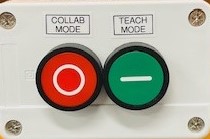Hybrid teaching for beginners
Hybrid teaching refers to teaching online and on-campus students simultaneously in two separate learning environments. This approach requires the design and facilitation of learning activities that are effective simultaneously for students in two different learning environments. For educators venturing into hybrid teaching for the first time, it may pose a challenge. However, the subsequent recommendations aim to provide guidance on thoroughly preparing and equipping oneself for the inaugural experience of hybrid teaching.
Before hybrid teaching sessions
- Running a hybrid teaching session is usually challenging for a single person, especially with larger student groups (Hagemeijer & Dolfing, 2022; Li et al, 2022; Raes et al, 2020). It's suggested to have a colleague or student help with handling questions from online students in the chat and managing the online environment like Zoom/Collaborate Ultra (for example, guiding students to breakout rooms, giving activity instructions in the chat). You can find guidance on setting up Zoom for teaching and setting up Collaborate Ultra.
- Unit Assessors might clarify their expectations regarding students’ advanced preparatory work (for example, in-person students to bring laptops or worksheets to the classroom) and active participation during the session. One way to do this is by posting an announcement on the Blackboard unit site to let students know about the hybrid teaching session and what's expected of them.
- It is also worth considering to make sure that your session plan includes ways for all students, whether in-person or online, to participate. Teacher-led activities would be recommended. Here are some examples:
1.Blackboard or Qualtrics quiz for concept check-in (Raes et al., 2020)
| 2. Demonstrate skills or problem-solving
|
3. Jigsaw reading activity
| 4. Group or individual presentations
|
These activities ensure engagement for everyone, regardless of their physical presence.
- Given the added challenges of hybrid teaching, effective preparation and planning for hybrid teaching sessions are crucial. Use the hybrid teaching planning template as a helpful guide when getting your session ready.
- Arrive in the classroom 5 to 10 minutes before the session begins and check the settings for the hybrid classroom.
- It is highly recommended that you utilise the Home PC in hybrid classrooms as it comes fully equipped and ready to use. However, if you prefer to use your personal laptop, please visit the Zoom Screen Share for Hybrid Teaching guide for setup instructions.
During hybrid teaching sessions
- Consider establishing ground rules at the start of the session. Feel free to use a set of slides on setting ground rules to share with students. For instance:
- Mute microphones in Zoom/Collaborate.
- Be mindful, as even whispers are picked up by ceiling microphones in the classroom.
- In-person students, raise your hand for questions.
- Online students, type your questions in the chat, and the teacher will address them when convenient.
- Avoid changing breakout groups too frequently. In-class students often stay in the same spot, and maintaining consistent online breakout groups during and across classes helps students build connections.
- When solving problems on the whiteboard in the classroom, please use the "Whiteboard Camera" by pressing the red button. This ensures that online students can easily follow and understand the problem-solving process displayed on the whiteboard.
- When delivering a lecture or addressing the entire class, activate "Teach Mode" by pressing the green button. This facilitates a focused and effective communication approach.
- Activate "Collab Mode" by simply pressing the red button during group discussions, student interactions, or Q&A sessions. This ensures that online students can clearly hear questions and contributions from the classroom.
- Be generous with time. Tasks like transitioning between activities, configuring and managing additional technology, and connecting students in different modes will require more time than usual.
After hybrid teaching sessions
Upload the session recording to the unit site and announce it to students.
Assistance
For consultation on Hybrid teaching strategies, please reach out to CTL at ctl@scu.edu.au.
For assistance on technical issues on Hybrid teaching, please contact Tech Services at servicedesk@scu.edu.au.
*Note: It’s also possible to mix online and in-person students in group activities, although it requires careful planning. For assistance and consultation on this, please reach out to CTL at ctl@scu.edu.au.
References:
Hagemeijer, R., & Dolfing, R. (2022). Hybrid Teaching & Learning. A literature review. Educational Consultancy & Professional Development. https://www.uu.nl/sites/default/files/Hybrid%20Teaching%20%26%20Learning%20Review.pdf
Li, K. C., Wong, B. T., Kwan, R., Wu, M. M., & Cheung, S. K. (2022, June). Evaluation of hybrid teaching effectiveness: The perspective of academics. In International Conference on Blended Learning (pp. 265-274). Cham: Springer International Publishing.
Raes, A., Vanneste, P., Pieters, M., Windey, I., Van Den Noortgate, W., & Depaepe, F. (2020). Learning and instruction in the hybrid virtual classroom: An investigation of students’ engagement and the effect of quizzes. Computers & Education, 143, 103682.
Raes, A., Detienne, L., Windey, I., & Depaepe, F. (2020). A systematic literature review on synchronous hybrid learning: gaps identified. Learning Environments Research, 23, 269-290.

